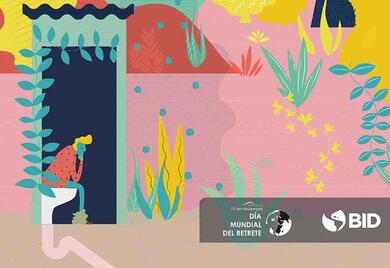
Mobilizing the private sector to ensure access to water and sanitation for all
Sunday November 19th, 2017 will be Toilet Day. Why would we need a Toilet Day?! It is not a celebration day; as per the United Nations, “World Toilet Day is about taking action to reach the 2.4 billion people living without a toilet.” In Latin America and the Caribbean, access to sanitation is one of our greatest challenges: only 22% of the population has access to safely managed sanitation, and 20 million practice open defecation. So how do we make this day meaningful? We should put it in a wider context, as it obviously goes beyond raising awareness. Indeed, the Sustainable Development Goals (SDGs) propose to transform the world. Goal six ambitions to “ensure access to water and sanitation for all” includes a clear target: By 2030, achieve access to adequate and equitable sanitation and hygiene for all and end open defecation, paying special attention to the needs of women and girls and those in vulnerable situations. A $15 billion market There is a case for the private sector in this target: toilets play a crucial role in creating a strong economy, as well as improving health and protecting people’s safety and dignity. Given the magnitude of the resources needed and the public resources constraints, it is essential to mobilize the private sector for: the funding of the investments, the construction, and the efficiency improvement in the operation of the infrastructure. In sanitation, there are near 15 million households without access to improved sanitation in Latin America and the Caribbean, which represents a market and potential revenue of up to $15 billion only for construction of sanitation infrastructure. While in pit or septic tank emptying and wastewater/sludge collection services, the market potentially reached over a billion dollars per year across the region, according to an IDB study. This also means the potential creation of thousands of jobs, provided with the help of the private sector. A drop of financial innovation For this we need a clear risk-reward framework, recognizing that “financial sustainability can be achieved through a combination of rates, tariffs and subsidies”. Also, it is important to state that — under adequate models — the private sector can supplement the public-sector approaches to reach lower income population, which is the most affected by lack of service coverage. [clickToTweet tweet="In #sanitation, there is a potential revenue of up to $15 billion in #LatinAmerica & #Caribbean" quote="In sanitation, there is a potential revenue of up to $15 billion in Latin America and the Caribbean" theme="style1"] To better serve the base of the pyramid, the region needs to promote blend participation from public, private and financial sectors for water and sanitation services. For example, SOIL, in Haiti, shows an innovative sanitation business model for lower-income households. It is a service to collect the waste from ecological toilets to treatment plants, where it is sold for agricultural purposes. This sustainable model covers the entire sanitation chain and after a few years it has already served over 2,000 people. With only 12 years left to accomplish the SDGs and the vast amount of resources required, we should recognize the need for an integral approach to water and sanitation services. Today, those lacking these network services are those that pay the highest price for alternative arrangements. However, with coordination between the public and the private sector we could develop products to better serve them. Development banks, like the IDB Group, engaging the private sector through IDB Invest and leveraging its public-sector presence, have an important role to play in promoting those synergies. Subscribe to receive more content like this! [mc4wp_form]